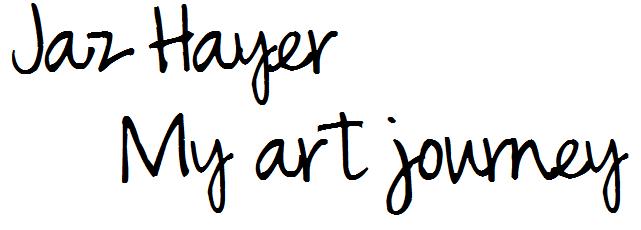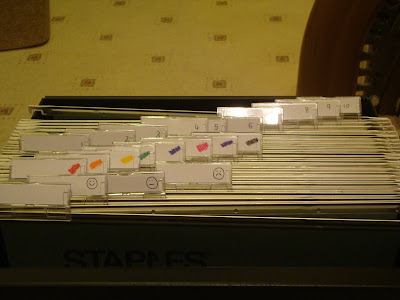Whilst helping my mum with some of her paperwork, I remembered that she owned a filing cabinet. Upon remembering this, I thought about how I could incorporate this into my installation.
The filing cabinet has two draws and is not very big, so it would be perfect.
I thought about how I would include the responses of the participants whose work would not necessaily be exhibitied on the boards.
Using the classification system that I have devised, I created folders for each corresponding category, and filed each persons response accordingly in relation to their identities and the individual relationship that I share with them.
Within these folders I have placed all of the responses that I have to date. These include a number of responses from the packs that I have distributed, Facebook comments, images which express and celebrate my participants identities, and the Facebook profile picture of each person that has joined my group.
The reason why I have chosen to include the latter is because many people have joined my group (and participated by doing this), but they may not have necessarily written anything on the group. This is still participation. Whilst printing off all the profile pictures of my group members I have learnt that it has grown slowly but surely across the internet community, and indeed from continent to continent. This is truly brilliant, as people have participated that I know in no way whatsoever, and I have no mutual friends with them. This just goes to show that people are willing to participate in a project where they feel that they can make a positive contribution, and celebrate their right to the freedom of expression.
Roux (2007, p.2) states,
"During the 20th Century and beyond, the focus of art has shifted and a new paradigm has emerged placing inter-human relations at the centre of contemporary art creation, thus creating a fertile ground for participative art to blossom."
All of the participants responses will reside in the top drawer of the filing cabinet. This draw has been given the label of: 15.3.2010 - . This is because the project really began on this date when my first pack was distributed. An end date has not been placed on the label as the project continues to progress, develop, and evolve:
The bottom drawer I have dedicated for participation. Within my installation, I will be having a table, with a selection of materials for partitipants to use to create a response to the word 'Identity' if they choose to do so. This will be encouraged through my personal statement, and some guidance which will be placed on the table. In this drawer, I have also created several folder in which I would like to encourage participants to 'file' their response to preserve and document their participation. I felt that it was important to give the participants a choice as to where they would like to file their response based on a personal preference.
So participants could choose to file their response based on colours, feelings, emotions, or within no specific category at all. It would be completely subjective and down to the individual.
As Simon Waterfall states in The National Curriculum (1999, p.116):
"Art and design is the freedom of the individual, the freedom of expression..."
I also plan on leaving some of my packs on the table. This is if people would like to take their time with their response and bring it back when they have completed it. In addition to this, I have also prepared cards to go on my table which state the web address for both this blog and my Facebook group, so they can also participate online if this suits their needs more purposefully. It will also hopefully encourage people to see the development of this project over time.
But it's important to remember that any person who engages with my installation will be a participant. It's all starting to come together now! :-)
References:
Roux, X. (2007) Participation in Contemporary Art. New York: Redseeds Art.
DfEE (1999) The National Curriculum Handbook for Primary Teachers. London: DfEE/QCA.






No comments:
Post a Comment